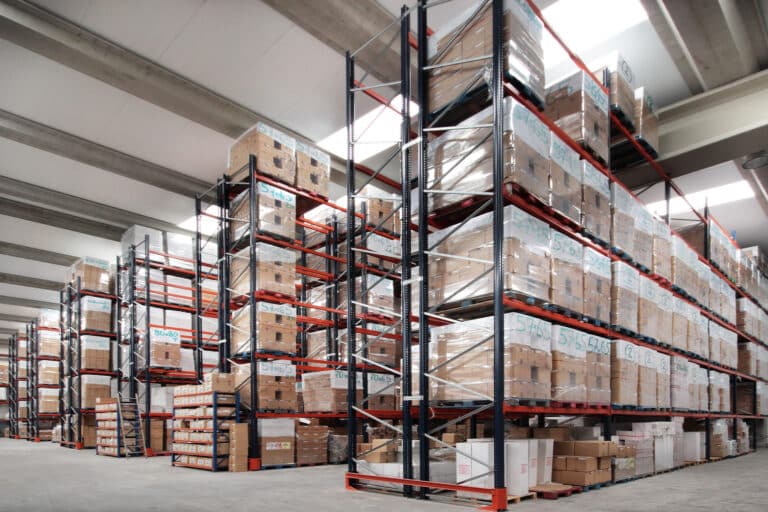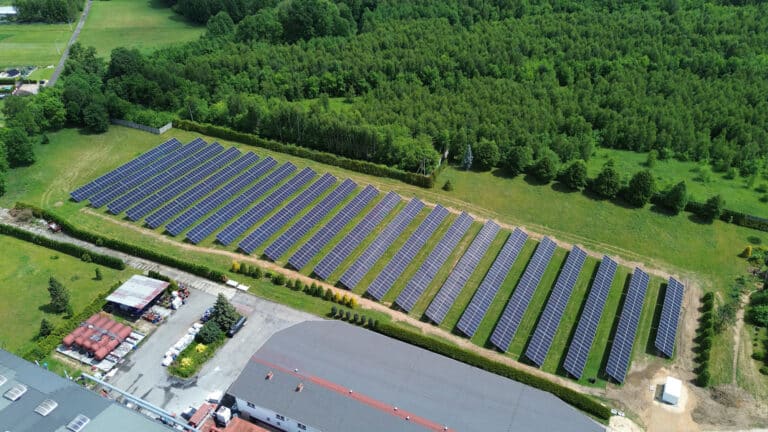How the latest industry research exposes the measurement gap that’s hampering retail decarbonisation
The retail sector’s environmental impact extends far beyond store operations and warehouses. Recent industry analysis reveals a striking reality: nearly 98 percent of a retailer’s total attributable emissions come from its value chain, with operational emissions representing just 2% of the total carbon footprint.
This data, emerging from comprehensive sector studies¹, fundamentally challenges how retailers approach carbon management and reveals why traditional measurement approaches often miss the bigger picture.
Where Retail Emissions Originate
McKinsey’s analysis of retail sector emissions shows that manufacturing accounts for 29% of total retail emissions, followed by agriculture and forestry at 24%, and power generation at 23%¹. Transportation, often perceived as retail’s primary carbon challenge, represents 15% of the total, which is significant but not the largest contributor.
This distribution reveals the complexity retailers face. The majority of their environmental impact occurs in upstream activities over which they exercise limited direct control. Manufacturing processes, agricultural practices, and energy generation systems that support retail supply chains operate independently of retailer decision-making, yet determine the bulk of sectoral emissions.
For fashion and home goods retailers, the challenge intensifies. Industry studies show that Scope 3 emissions can constitute up to 98% of their carbon footprint2, reflecting the carbon-intensive nature of textile production, furniture manufacturing, and complex global sourcing patterns.
The Multi-Tier Measurement Challenge
The retail sector’s carbon complexity stems partly from its supply chain structure. Unlike manufacturing companies that often maintain direct relationships with component producers, retailers frequently source through intermediaries. Retail Tier 1 suppliers are often wholesalers and trading organisations rather than producers themselves, creating additional layers between retailers and actual emission sources.
Current industry data reveals the extent of this visibility gap. Only 15% of companies have enough visibility to trace emissions beyond their first-tier suppliers, leaving 85% essentially blind to upstream carbon sources3. This limitation isn’t merely a data collection challenge, it represents a fundamental constraint on retailers’ ability to influence their largest emission sources.
APQC research found that only 32% of organisations include lower-tier suppliers in their overall sustainability strategy, with just 18% having good sub-tier supplier visibility across their products4. For retailers operating through complex, multi-tier supply networks, this visibility deficit creates significant challenges for credible carbon management.
Data Quality and Verification
Even when supply chain data becomes available, quality concerns persist. Recent survey data reveals that whilst 61% of businesses track their Scope 1 emissions and 42% track Scope 2 emissions, only 28% are actively measuring their Scope 3 emissions5, the category that represents up to 98% of retail carbon footprints.
Supply chains involve numerous tiers of suppliers, each varying in sustainability commitments and data collection capabilities. Smaller suppliers, particularly those several tiers removed from primary retailers, frequently lack the technological infrastructure or resources necessary for accurate emissions measurement and reporting.
Academic research highlights that generating Scope 3 data with sufficient quality involves high transaction costs, as carbon accounting standards require relevance, completeness, consistency, transparency, and accuracy6. For retailers managing thousands of supplier relationships across diverse product categories, achieving these standards represents both methodological and practical challenges.
Practical Approaches to Data Quality
Addressing retail supply chain emission measurement requires practical strategies that acknowledge resource constraints across supplier tiers. Leading retailers are adopting tiered approaches that prioritise data collection based on emission materiality and supplier capability.
Some companies focus initially on high-impact suppliers representing 80% of their carbon footprint, using standardised templates and regular supplier engagement to improve data quality over time. This approach recognises that perfect data across all suppliers remains impractical, whilst ensuring measurement accuracy where it matters most.
Direct supplier engagement through training programmes and capacity building has proven effective in improving data quality. Many retailers now organise supplier workshops specifically focused on carbon data collection, recognising that smaller suppliers often lack both the knowledge and resources for sophisticated emissions measurement.
However, significant challenges persist. Tier 2 and Tier 3 suppliers are often the actual manufacturers and frequently operate with minimal oversight and limited measurement capabilities. The further removed suppliers are from direct retail relationships, the harder reliable emissions data becomes to obtain, yet these distant suppliers often represent the most carbon-intensive activities in retail value chains.
Emerging approaches include collaborative industry initiatives where retailers pool resources to engage common suppliers, and the development of sector-specific guidance that acknowledges the practical constraints smaller suppliers face. The most progress occurs when measurement approaches balance methodological rigour with pragmatic recognition of supplier capabilities and resource limitations.
Implications for Retail Carbon Management
The retail sector’s carbon complexity fundamentally challenges conventional approaches to environmental performance assessment. With up to 98% of emissions occurring beyond direct operational control, retailers must navigate between environmental accountability and practical measurement constraints.
The data quality challenges create particular risks around carbon claims credibility. Stakeholders increasingly scrutinise retail environmental commitments, yet the underlying measurement challenges mean that even well-intentioned retailers can struggle to provide robust evidence for their carbon performance.
This creates a strategic imperative for measurement approaches that acknowledge data limitations whilst maintaining credibility. Retailers benefit from frameworks that can assess progress despite imperfect data, distinguish between different types of emission sources, and communicate complex carbon narratives transparently.
The most effective retail carbon strategies recognise these complexities rather than attempting to apply standardised approaches across diverse business contexts. Independent verification becomes particularly valuable in validating measurement methodologies and ensuring that carbon claims accurately reflect both achievements and limitations in retail carbon management.
Technology and Transparency
Leading retailers are investing in technological solutions to address supply chain visibility challenges, though progress remains uneven across different approaches.
Standardised data collection platforms are most effective, with many retailers adopting software that can integrate supplier data and emissions calculations. These systems reduce the manual effort required for carbon footprint assessment whilst providing standardised templates that suppliers can complete more easily.
Supply chain management systems increasingly incorporate carbon tracking modules, enabling retailers to link emissions data directly to procurement decisions and supplier performance metrics. This integration helps embed carbon considerations into operational processes rather than treating them as separate reporting exercises.
However, technology adoption varies significantly across supply chain tiers. Smaller suppliers will often lack the technology or resources to measure and report accurately, with language, location, and infrastructure gaps compounding the challenge.
It is worth noting that the most successful technological approaches often tend to focus on simplifying data collection rather than adding complexity to supplier requirements. This underscores the importance of pragmatism; better to have credible data which is less detailed, than data which appears detailed but is actually very messy and adds a lot of uncertainty into your verified carbon footprint.
References:
- McKinsey & Company (2024). “What lies beneath retail’s carbon emissions”
- URL: https://www.mckinsey.com/featured-insights/sustainable-inclusive-growth/charts/what-lies-beneath-retails-carbon-emissions
- Publication Date: October 1, 2024
- McKinsey & Company (2022). “Climate sustainability in retail: Who will pay?”
- URL: https://www.mckinsey.com/industries/retail/our-insights/climate-sustainability-in-retail-who-will-pay
- Publication Date: May 4, 2022
- Sievo.com
- URL: https://sievo.com/blog/supplier-tiers
- Publication date: May 5, 2025
- APQC cross-industry benchmarking data
- Sweep (2024). “Sustainability in Action: Harnessing the Power of Data to Unlock Sustainable Business Transformation”
- URL: https://www.sweep.net/insights/scope-3-understanding-supplier-tiers
- Published: October 28, 2024
- Nature Communications Earth & Environment (2025). “Net-zero greenhouse gas mitigation potential across multi-tier supply chains”
- URL: https://www.nature.com/articles/s43247-025-02173-9
- Note: This appears to be a 2025 publication based on the search results


